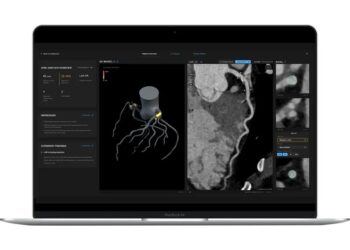# Beyond the Scaling Laws: Charting the New Frontier of AI Efficiency
For the last several years, the AI landscape has been dominated by a simple, powerful narrative: bigger is better. The unwritten rule, codified by the “scaling laws,” was that increasing a model’s parameter count and training data would inevitably lead to greater capabilities. This race to the top gave us breathtakingly powerful foundation models, and parameter count became a public proxy for prowess. We watched the numbers climb from millions to billions, and now into the trillions.
But the era of unbridled scaling is showing its cracks. The pursuit of scale at all costs is running into the unforgiving walls of physical and economic reality. As we stand at this inflection point, the most exciting innovations are no longer just about building bigger models, but about building *smarter* ones. The new frontier is efficiency.
### The High Price of Peak Performance
The brute-force scaling approach has undeniable limitations. Training a state-of-the-art large language model (LLM) can cost tens of millions of dollars in compute alone, placing it out of reach for all but a handful of hyperscale companies.
Even more critical is the cost of inference—the computational price of putting these models to work. A massive model might deliver stellar benchmark results, but if its latency is too high or its per-token cost makes real-world applications economically unviable, its utility is severely constrained. Add to this the immense energy consumption and data center footprint required, and it becomes clear that the “bigger is better” paradigm is not a sustainable path for widespread AI adoption.
### From Generalists to Specialists
The first major shift away from monolithic models is towards specialization. We’re seeing that a smaller, 7-billion-parameter model, when fine-tuned on a high-quality, domain-specific dataset (like legal contracts or medical research), can often outperform a generalist 100-billion-parameter model on tasks within that domain.
This is the AI equivalent of choosing a specialist over a general practitioner. Instead of relying on one massive model that knows a little about everything, developers are creating leaner, more focused models that are experts in their niche. These specialist models are not only more accurate for their given task but are also dramatically cheaper to run and faster to respond, opening the door for complex AI-powered features in applications where cost and speed are paramount.
### Smarter Architectures, Not Just Bigger Ones
The most profound innovations are happening at the architectural level. Researchers and engineers are fundamentally rethinking how models are built to maximize performance per parameter. Two key techniques are leading the charge:
* **Mixture of Experts (MoE):** Traditional “dense” models activate every single one of their parameters to process a single token of input. It’s computationally expensive and inefficient. MoE architectures, seen in models like Mixtral 8x7B, take a different approach. They consist of a router network and a pool of smaller “expert” sub-networks. For any given input, the router intelligently selects and activates only a small subset of experts (e.g., 2 out of 8) to handle the computation. The result is a model with a massive total parameter count (for knowledge capacity) but a much smaller active parameter count during inference (for speed and efficiency).
* **Quantization and Pruning:** These are optimization techniques that shrink models post-training. **Quantization** reduces the numerical precision of the model’s weights (e.g., from 16-bit floating-point numbers to 8-bit or even 4-bit integers), drastically cutting down on memory footprint and often speeding up computation with minimal loss in accuracy. **Pruning** identifies and removes redundant or unimportant neural connections within the model, much like trimming dead branches from a tree, to create a sparser, more efficient network.
### Conclusion: A More Democratic and Sustainable AI Future
The narrative is changing. The future of AI is not a single, all-knowing oracle in the cloud. It is a diverse ecosystem of models, both large and small, general and specialized, running everywhere from massive data centers to the device in your pocket.
By shifting our focus from raw scale to computational efficiency, we are not just solving engineering challenges; we are democratizing access to powerful AI. This new paradigm empowers smaller teams, enables novel on-device applications with greater privacy, and fosters a more sustainable and economically viable technological landscape. The next great AI breakthrough may not be a model with a trillion parameters, but an architecture that achieves more with less.
This post is based on the original article at https://www.therobotreport.com/inaugural-world-humanoid-robot-games-step-into-the-spotlight/.






















